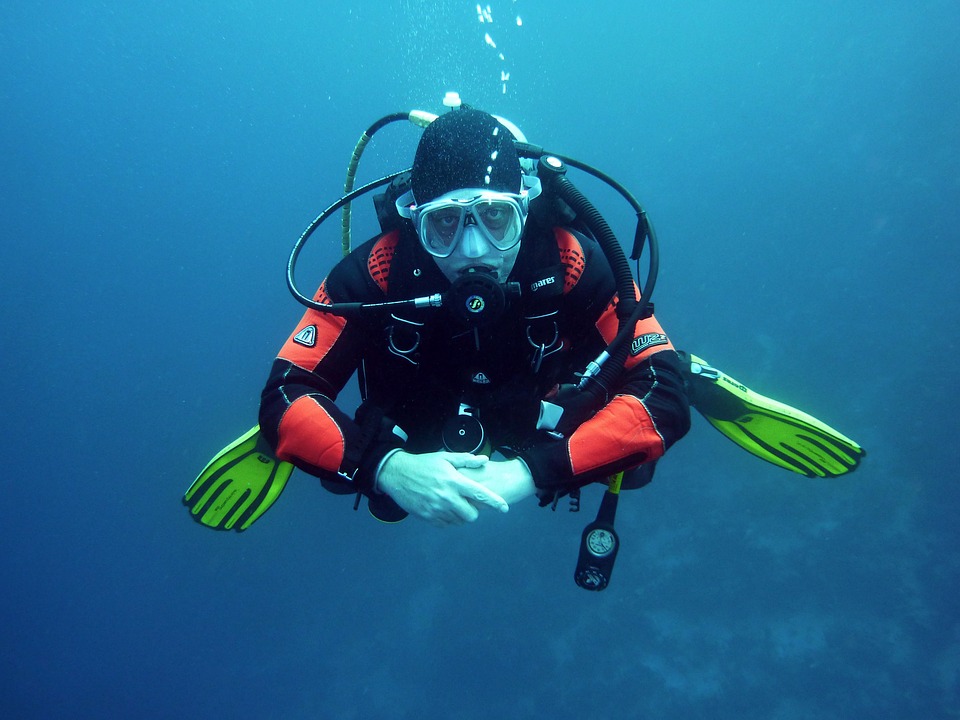Introduction
Scuba diving allows us to venture into the deep and explore a breathtaking underwater world. With the advancements in scuba gear technology, the experience has become even more immersive and enjoyable. In this article, we will dive into the latest innovations in scuba gear that enhance safety, mobility, and overall diving experience.
1. Full Face Masks
Traditional scuba masks cover the eyes and nose, requiring a regulator to be inserted into the mouth for breathing. However, full face masks have gained popularity as they provide a clear view of the surroundings and create a more natural breathing experience. These masks cover the entire face, allowing divers to breathe through their nose or mouth without the need for a separate regulator.
2. Integrated Dive Computers
Integrated dive computers have revolutionized scuba diving by combining the functionality of a pressure gauge, depth gauge, and timer into a single device. These computers monitor dive time, depth, and decompression limits, providing real-time data to ensure optimal safety. Additionally, they can track multiple gases, making them ideal for technical divers engaging in mixed gas dives.
3. Lightweight Dive Tanks
Traditional dive tanks made of steel or aluminum can be heavy and cumbersome, limiting a diver’s mobility and endurance. However, recent advancements in materials have resulted in lightweight dive tanks made from composite materials like carbon fiber. These tanks reduce the weight burden without compromising their durability, allowing divers to explore for longer periods without fatigue.
4. Underwater Communication Devices
Communication underwater has always been a challenge due to the inability to speak or hear clearly. To overcome this, new communication devices have been developed, enabling divers to communicate effortlessly with their buddies or dive guides. These devices use bone conduction technology or wireless audio transmission, providing crystal-clear sound transmission underwater, enhancing safety, and facilitating better coordination between divers.
5. Drysuits with Advanced Insulation
In colder waters, drysuits are essential to protect divers from hypothermia. Traditional drysuits required multiple layers of insulation to keep the diver warm. However, new drysuit designs incorporate advanced insulation materials such as Thinsulate™, which provide superior warmth without adding bulk. These suits also ensure flexibility and ease of movement, allowing divers to explore chilly waters comfortably.
FAQs
Q1: Are full face masks safe?
A1: Full face masks are generally safe when used correctly. However, it is important to receive proper training on their usage and maintenance before diving. It is essential to familiarize yourself with mask clearing techniques and ensure a proper fit to maintain a secure seal.
Q2: How do integrated dive computers work?
A2: Integrated dive computers work by continuously monitoring depth, time, and decompression limits during a dive. They calculate the amount of nitrogen absorbed by the body and provide real-time information, including ascent rate and decompression stops. This data helps divers avoid decompression sickness and ensures safer dives.
Q3: Can lightweight dive tanks hold sufficient air?
A3: Yes, lightweight dive tanks have the same capacity as traditional tanks. The weight reduction is achieved through innovative design and the use of advanced materials. These tanks are thoroughly tested to meet safety and performance standards while providing adequate air supply for diving.
Q4: Are underwater communication devices waterproof?
A4: Yes, underwater communication devices are designed to be waterproof and specifically built to withstand the pressures associated with scuba diving. They are tested for their ability to function reliably underwater and in adverse conditions.
Q5: How effective are the advanced insulation materials in drysuits?
A5: Advanced insulation materials, such as Thinsulate™, have proven to be highly effective at preserving body heat and keeping divers warm in cold waters. These materials provide excellent insulation without compromising flexibility and mobility, ensuring a comfortable and safe diving experience.





